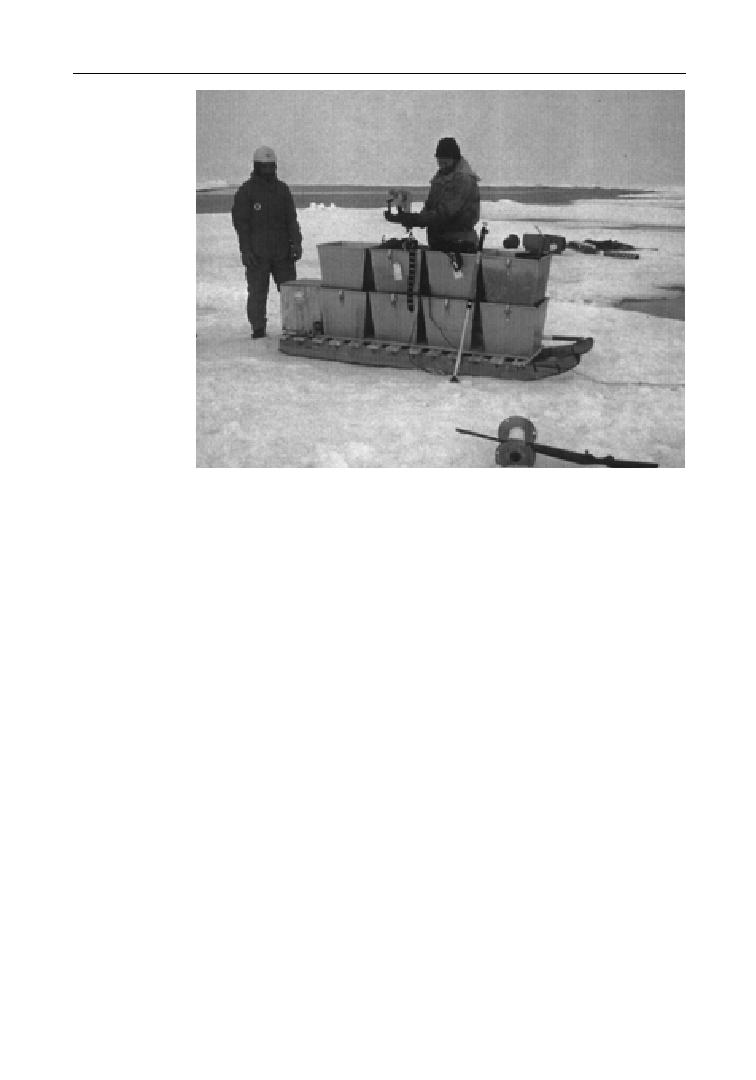
1994 Arctic Ocean Section
Dave Paton and
Ikaksak Amagoalik
collecting snow
samples for con-
taminant studies.
or reflected back to the atmosphere. The fresh water exported from the Arctic
Basin in the form of ice and river runoff into the convective gyres of the Green-
land, Iceland and Laborador Seas influences the formation of North Atlantic
deep water and heat transport associated with global thermohaline circula-
tion. The ocean programs on AOS-94 were designed to investigate the ice
cover, water mass structure, origins of the water masses, and ocean circulation
on a major transect of the Arctic Ocean.
Global climate change and the expected increases in atmospheric carbon
dioxide will have a major impact on the carbon cycle of the Arctic Ocean.
Evaluating the internal cycling of carbon plus the fluxes from rivers and adja-
cent seas is important in understanding what the effect will be on biogeochemi-
cal cycling and the ability of the Arctic Ocean to sequester carbon dioxide.
The Arctic Ocean and its marginal seas have only recently been recognized as
areas of high biological productivity during the favorable solar radiation sea-
sons. Primary productivity converts atmospheric carbon dioxide to organic
carbon in the ocean, where it may then be recycled by organisms back to the
atmosphere, remain dissolved in the ocean or be deposited on the sea floor as
particulates. The Arctic Ocean is believed to play an important role in the
global carbon cycle, but too little work has been done to quantify that role. A
major goal of AOS-94 entailed examination of primary productivity levels
and the organic and inorganic carbon pools of the central Arctic.
There is also major international concern that the Arctic has been polluted
by a variety of contaminants, including heavy metals, organochlorines and
radionuclides. Contaminants have been dumped directly into the Arctic Ocean.
14



 Previous Page
Previous Page
